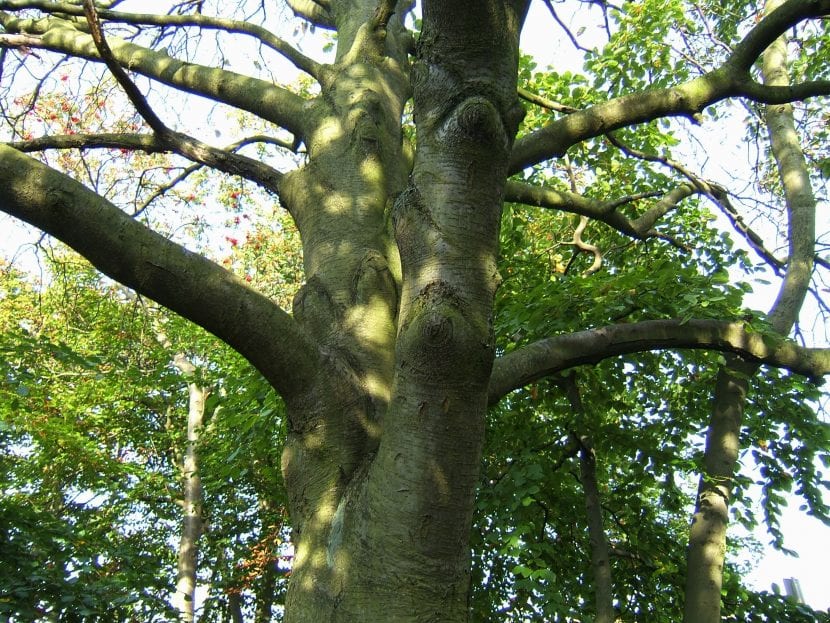
Image - Wikimedia / AnRo0002
El Sorbus intermediate it is a deciduous tree ideal for medium and spacious gardens. Its maintenance is simple, and as in addition to a very pleasant shade during the summer, it is undoubtedly a plant to take into account.
As if that seems little to you, you should know that during the fall it turns a magnificent color, so much so that it could well be said that he dresses up before the frosts arrive.
Origin and characteristics

Image - Wikimedia / MPF
It is a hybrid species (sorbus aucuparia for another Sorbus, Maybe the Sorbus torminalis or sorbus aria) native to southern Sweden, although it is also found in the extreme east of Denmark, extreme southwest of Finland, in the Baltic states and in northern Poland. It is popularly known as Swedish rowan, and grows to a height between 10 and 20 meters, with a trunk diameter of up to 60cm.
The leaves are green on the upper side and hairy on the underside, and are 7 to 12cm long by 5 to 7cm wide. They are made up of 4 to 7 lobes, being wider in the middle, and rounded at the apex. During the fall they turn yellowish to grayish brown before falling.
The flowers have five white petals, are about 15-20mm in diameter, and bloom in early spring. The fruit is an oval pommel 15mm long by 10mm wide, which acquires a reddish or orange-reddish color when it ripens in autumn.
What are their cares?

Image - Wikimedia / Kajetan Dzierżanowski
If you want to have a specimen of Sorbus intermedia in your garden, we recommend that you provide it with the following care:
- Location: it must be outside, in full sun.
- Earth:
- Garden: fertile, well drained, and deep.
- Pot: universal growing medium (for sale here).
- Irrigation: frequent. Water 4 or 5 times a week in summer, and a little less the rest of the year.
- Subscriber: in spring and summer, pay every 15 days with Organic fertilizers.
- Multiplication: by cuttings towards spring.
- Rusticity: resistant up to -18ºC.
What did you think of this tree?